 W
WRaimund Johann Abraham was an Austrian architect.
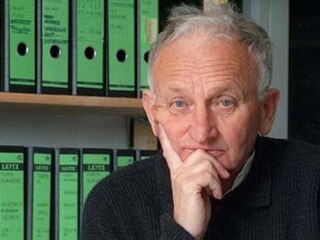 W
WGünter Behnisch was a German architect, born in Lockwitz, near Dresden. During the Second World War he became one of Germany's youngest submarine commanders. Subsequently, Behnisch became one of the most prominent architects representing deconstructivism. His prominent projects included the Olympic Park in Munich and the new West German parliament in Bonn.
 W
WMinnette de Silva was an internationally recognized architect, considered the pioneer of the modern architectural style in Sri Lanka. De Silva was a fellow of the Sri Lanka Institute of Architects.
 W
WEgon Eiermann was one of Germany's most prominent architects in the second half of the 20th century.
 W
WPeter Eisenman is an American architect. Considered one of the New York Five, Eisenman is known for his writing and speaking about architecture as well as his designs, which have been called high modernist or deconstructive.
 W
WKenneth Brian Frampton is a British architect, critic and historian. He is the Ware Professor of Architecture at the Graduate School of Architecture, Planning, and Preservation at Columbia University, New York. He has been a permanent resident of the United States since the mid-1980s. Frampton is regarded as one of the world's leading historians of modernist architecture.
 W
WWalter Adolph Georg Gropius was a German architect and founder of the Bauhaus School, who, along with Alvar Aalto, Ludwig Mies van der Rohe, Le Corbusier and Frank Lloyd Wright, is widely regarded as one of the pioneering masters of modernist architecture. He is a founder of Bauhaus in Weimar (1919). Gropius was also a leading architect of the International Style.
 W
WJohn Quentin Hejduk was an American architect, artist and educator of Czech origin who spent much of his life in New York City, United States. Hejduk is noted for having had a profound interest in the fundamental issues of shape, organization, representation, and reciprocity.
 W
WHeinrich Hübsch was a German architect. After studies in Heidelberg (1813–15) and at Friedrich Weinbrenner's school of architecture in Karlsruhe (1815–17) he traveled extensively in Greece and Italy (1817–24). In 1831 he was appointed Oberbaurat at Karlsruhe. He designed many churches and other public buildings, mainly in the Grand Duchy of Baden, and is also known for his writings.
 W
WLouis Isadore Kahn was an American architect, based in Philadelphia. After working in various capacities for several firms in Philadelphia, he founded his own atelier in 1935. While continuing his private practice, he served as a design critic and professor of architecture at Yale School of Architecture from 1947 to 1957. From 1957 until his death, he was a professor of architecture at the School of Design at the University of Pennsylvania.
 W
WPaulo Mendes da Rocha is a Brazilian architect.
 W
WLudwig Mies van der Rohe was a German-born American architect. He was commonly referred to as Mies, his surname. Along with Alvar Aalto, Le Corbusier, Walter Gropius and Frank Lloyd Wright, he is regarded as one of the pioneers of modernist architecture.
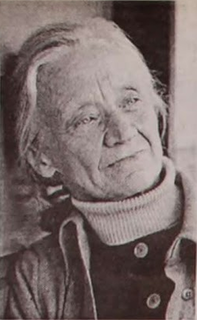 W
WElizabeth (Bauer) Mock was director of the Department of Architecture and Design at the Museum of Modern Art (MoMA) and a university professor. She was a charter apprentice at Frank Lloyd Wright's Taliesin, and the first former Taliesin fellow to join the MoMA staff. She was an influential advocate for modern architecture in the United States.
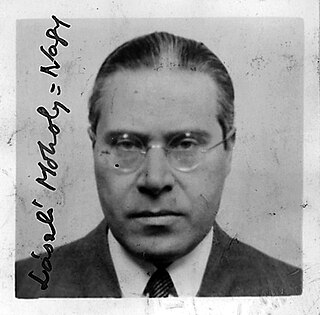 W
WLászló Moholy-Nagy was a Hungarian painter and photographer as well as a professor in the Bauhaus school. He was highly influenced by constructivism and a strong advocate of the integration of technology and industry into the arts. The art critic Peter Schjeldahl called him "relentlessly experimental" because of his pioneering work in painting, drawing, photography, collage, sculpture, film, theater, and writing.
 W
WJosé Rafael Moneo Vallés is a Spanish architect. He won the Pritzker Prize for architecture in 1996 and the RIBA Royal Gold Medal in 2003.
 W
WGlenn Marcus Murcutt AO is an Australian architect and winner of the 1992 Alvar Aalto Medal, the 2002 Pritzker Architecture Prize and the 2009 American Institute of Architects Gold Medal. Glenn Murcutt works as a sole practitioner without staff, builds only within Australia and is known to be very selective with his projects. Being the only Australian winner of the prestigious Pritzker Prize, he is often referred to as Australia's most famous architect.
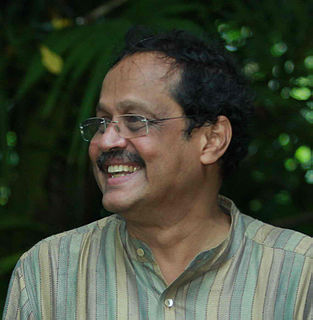 W
WEugene Pandala is an Indian architect, known for building with values of environmental sustainability.
 W
WBimal Patel is an architect from Gujarat, India, with over 35 years of professional, research and teaching experience in architecture, urban design and urban planning. He is President of CEPT University in Ahmedabad and leads HCP Design, Planning and Management Pvt. Ltd., an architecture, planning and project management firm. He also founded Environmental Planning Collaborative, a not-for-profit, planning research and advocacy organization.
 W
WGaetano Pesce is an Italian architect and a design pioneer of the 20th century. Mr. Pesce was born in La Spezia in 1939, and he grew up in Padua and Florence. During his 50-year career, Mr. Pesce has worked as an architect, urban planner, and industrial designer. His outlook is considered broad and humanistic, and his work is characterized by an inventive use of color and materials, asserting connections between the individual and society, through art, architecture, and design to reappraise mid-twentieth century modern life.
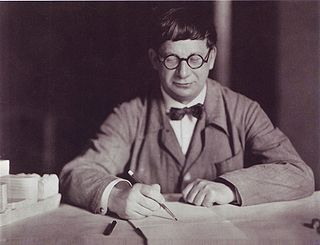 W
WHans Poelzig was a German architect, painter and set designer.
 W
WPiero Portaluppi was an Italian architect.
 W
WGottlieb Eliel Saarinen was a Finnish-American architect known for his work with art nouveau buildings in the early years of the 20th century. He was also the father of famed architect Eero Saarinen.
 W
WAlexander Schawinsky, known as Xanti Schawinsky was a Swiss painter, photographer and theatre designer. An alumnus of the Bauhaus, Schawinsky belonged to the circle around Bauhaus founder and architect Walter Gropius.
 W
WDenise Scott Brown is an American architect, planner, writer, educator, and principal of the firm Venturi, Scott Brown and Associates in Philadelphia. Scott Brown and her husband and partner, Robert Venturi, are regarded as among the most influential architects of the twentieth century, both through their architecture and planning, and theoretical writing and teaching.
 W
WWerner Seligmann, was an architect, urban designer and educator.
 W
WGottfried Semper was a German architect, art critic, and professor of architecture, who designed and built the Semper Opera House in Dresden between 1838 and 1841. In 1849 he took part in the May Uprising in Dresden and was put on the government's wanted list. Semper fled first to Zürich and later to London. Later he returned to Germany after the 1862 amnesty granted to the revolutionaries.
 W
WÁlvaro Joaquim de Melo Siza Vieira is a Portuguese architect, and architectural educator. He is internationally known as Álvaro Siza and in Portugal as Siza Vieira.
 W
WLuigi Snozzi was a Swiss architect, born in Mendrisio, Ticino. He worked in Locarno and Lugano.
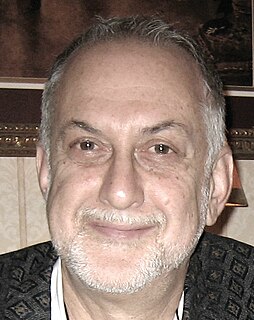 W
WMichael David Sorkin was an American architectural and urban critic, designer, and educator. He was considered to be "one of architecture’s most outspoken public intellectuals," a polemical voice in contemporary culture and the design of urban places at the turn of the twenty-first century. Sorkin first rose to prominence as an architectural critic for the Village Voice in New York City, a post which he held for a decade throughout the 1980s. In the ensuing years, he taught at prominent universities around the world, practiced through his eponymous firm, established a nonprofit book press, and directed the urban design program at the City College of New York. He died at age 71 during the COVID-19 pandemic due to complications brought on by COVID-19.
 W
WTiago do Vale is a Portuguese architect. He heads the architectural practice Tiago do Vale Architects.
 W
WRobert Charles Venturi Jr. was an American architect, founding principal of the firm Venturi, Scott Brown and Associates, and one of the major architectural figures of the twentieth century.
 W
WWang Shu is a Chinese architect based in Hangzhou, Zhejiang Province. He is the dean of the School of Architecture of the China Academy of Art. With his practice partner and wife Lu Wenyu, he founded the firm Amateur Architecture Studio. In 2012, Wang became the first Chinese citizen to win the Pritzker Prize, the world's top prize in architecture. The award was the subject of some controversy since the Pritzker committee did not also award Lu Wenyu, his wife and architectural partner, despite their years of collaboration.
 W
WHans Wittwer was a Swiss architect who worked in Germany and who taught architecture at the Bauhaus art school in Dessau. He was a proponent of functionalist architecture; the idea that form follows function. He worked with the Bauhaus director Hannes Meyer both at the school and in a joint architectural practice in Basel. He also taught at the Kunstgewerbeschule Burg Giebichenstein in Halle.
 W
WFrank Lloyd Wright was an American architect, designer, writer, and educator. He designed more than 1,000 structures over a creative period of 70 years. Wright believed in designing in harmony with humanity and the environment, a philosophy he called organic architecture. This philosophy was exemplified in Fallingwater (1935), which has been called "the best all-time work of American architecture." Wright played a key role in the architectural movements of the twentieth century, influencing generations of architects worldwide through his works.
 W
WPeter Zumthor is a Swiss architect whose work is frequently described as uncompromising and minimalist. Though managing a relatively small firm, he is the winner of the 2009 Pritzker Prize and 2013 RIBA Royal Gold Medal.